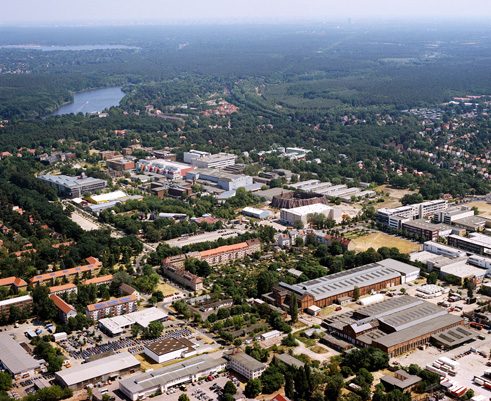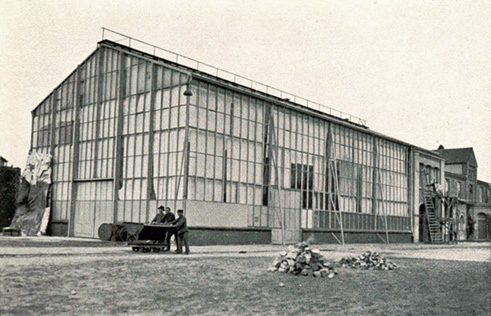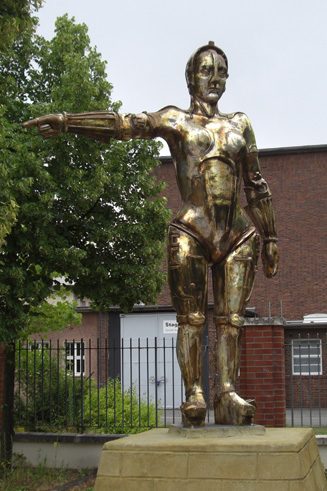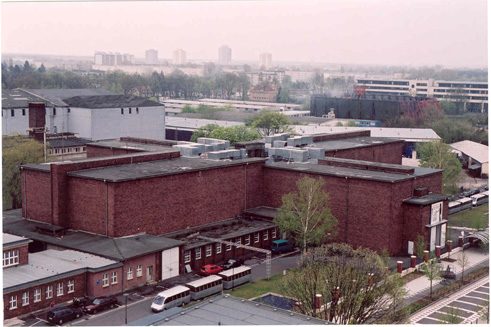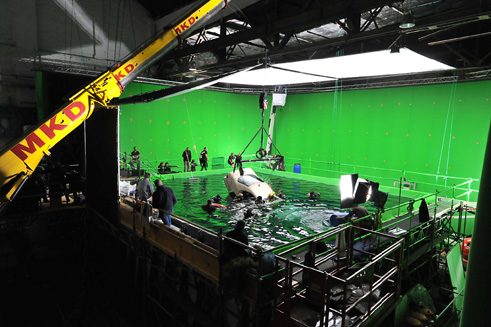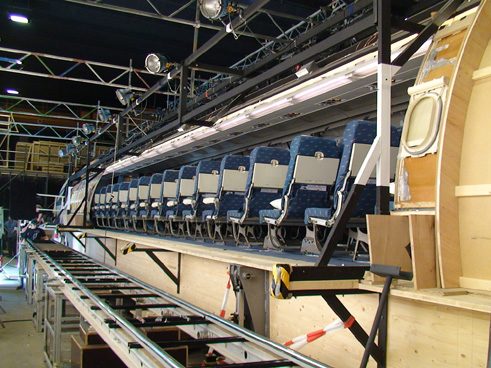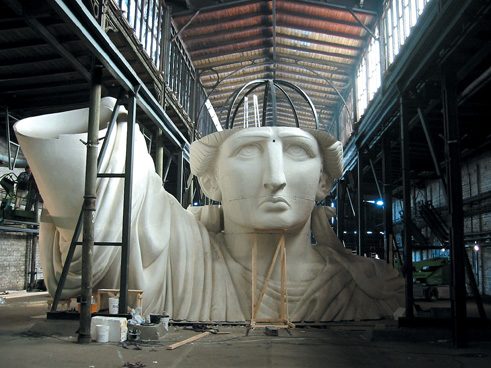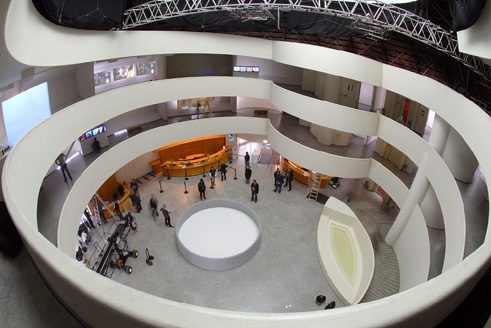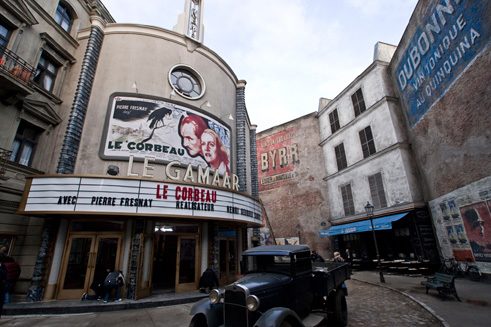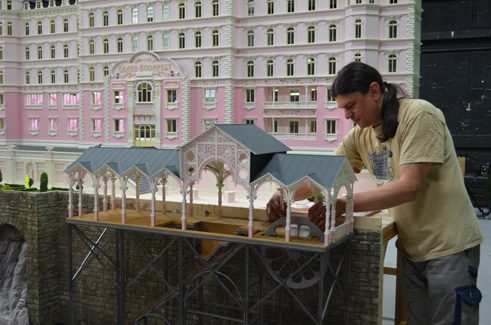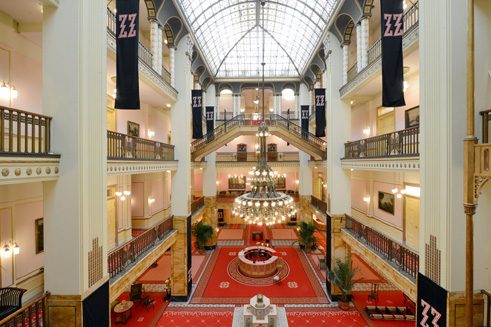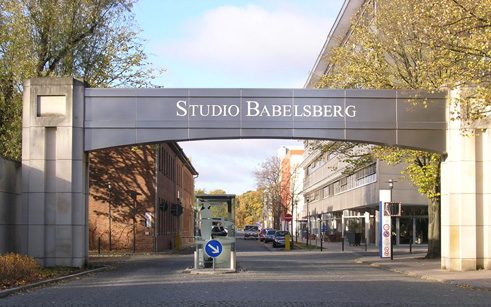Studio Babelsberg
“This is the Fork in the Road we Are Currently Facing”
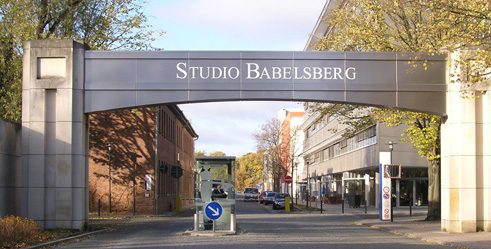
Studio Babelsberg, the world’s oldest film studio, has also proven itself able to churn out Oscars for Europe. CEO Carl Woebcken is nonetheless concerned about its future.
Mr Woebcken, there were no Studio Babelsberg productions in the running for the German Film Award 2015. Were you disappointed?
No, that was to be expected given that Studio Babelsberg specializes more in major international co-productions than in German films. Only big films require the sort of production platform that we offer.
On the other hand, Studio Babelsberg, as co-producer of Wes Andersons “The Grand Budapest Hotel”, was able to bring home no fewer than four Oscars from the Academy Awards in February 2015. How important are such prizes?
Since 2002 we have won 14 Oscars and have been nominated 40 times. Of the four Oscars this year, three were particularly important: Best Production Design, Best Costume Design, Best Makeup. This is because they reward the actual filmmaking crafts, which is what the name Studio Babelsberg stands for. As executive producer, we additionally assume complete logistical and administrative responsibility for a film. We enjoy an outstanding international reputation in both of these areas.
The combination of tradition and success
Studio Babelsberg celebrated its 100th anniversary in 2012. This is where such classic films as Fritz Lang’s “Metropolis” and Josef von Sternberg’s “The Blue Angel” were made. Together with Christoph Fisser, you purchased the studios in Potsdam-Babelsberg in 2004 for the symbolic price of one euro. Did the studio’s long filmmaking tradition help you promote the site?When we went to Hollywood twelve years ago to drum up new business, tradition was the only thing we had to throw in the pot. To be honest, though, that raised little more than a tired smile. Ultimately, all that counted was finance, experience and funding conditions. We found this very sobering. Thanks to the German Federal Film Fund, we were then able to present our initial successes in Hollywood and attract productions to Germany. Nowadays, everyone thinks the combination of tradition and success is great, but the studio’s history on its own is of no real significance.
Which film productions pick Babelsberg as their location?
First and foremost, Babelsberg stands for historical films and literary adaptations like George Clooney’s Monuments Men and Brian Percival’s The Book Thief, which incidentally are often based on German culture and history. These days, however, a film can be shot anywhere in the world. As a rule, locations with which we compete in Europe are Prague, Budapest and London. That said, the great advantage of Germany, and especially of Berlin, is that we are able to offer authentic, original settings for historical films in particular. This applies not only to the Nazi era, but also to the period before and after. We are also much in demand when it comes to films set in the 1960s to 1980s because this is the period in which we built up our repository of props.
Studio Babelsberg is the largest European film studio complex – indeed Studio 20, with its floor area of over 7,000 square metres, is even said to be the world’s largest film studio. This attracts blockbusters such as “The Hunger Games – Mockingjay” to Babelsberg. Can you compete with Hollywood?
70 to 80 percent of The Hunger Games was shot in the studios in Atlanta; only the “on location” scenes were made here. There is certainly interest in this production location: we have a good reputation, outdoor backdrops in Berlin and good opportunities for creative people. In the end, however, we have to send such major productions away – something that unfortunately happens more and more often nowadays.
This cut-throat competition for funding
Why?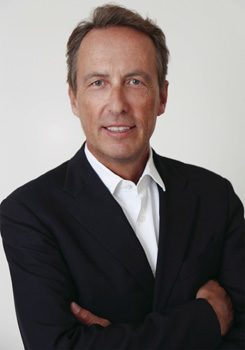 Dr. Carl Woebcken
| © Studio Babelsberg
Because of the film funding caps: in England, a 200 million pound production can expect up to 40 million pounds in funding, whereas the German Federal Film Fund will pay a maximum of 10 million euros. That is why a blockbuster like the trilogy The Hobbit will be shot at London’s Pinewood Studios rather than in Babelsberg. German film funding really needs to be on a par with other European funding systems, but sadly this is not the case, which is why the really big productions go to Hungary, Prague or England. This cut-throat competition for funding is currently seeing the film industry make a major shift away from Germany. This is the fork in the road we are currently facing.
Dr. Carl Woebcken
| © Studio Babelsberg
Because of the film funding caps: in England, a 200 million pound production can expect up to 40 million pounds in funding, whereas the German Federal Film Fund will pay a maximum of 10 million euros. That is why a blockbuster like the trilogy The Hobbit will be shot at London’s Pinewood Studios rather than in Babelsberg. German film funding really needs to be on a par with other European funding systems, but sadly this is not the case, which is why the really big productions go to Hungary, Prague or England. This cut-throat competition for funding is currently seeing the film industry make a major shift away from Germany. This is the fork in the road we are currently facing. On the other hand, there is criticism that too much German funding already goes to Babelsberg to pay for Hollywood co-productions like Quentin Tarantino’s “Inglourious Basterds” and that smaller German productions are being disadvantaged.
The entire German film industry profits from the funding of international films, in terms of everything from the transfer of know-how to the discovery of homegrown talent. From a production viewpoint, it is mainly the film technology companies and subcontractors rather than Studio Babelsberg which earn most from this.
Studio Babelsberg is one of the major cinema film studios with the highest turnover in Europe, yet despite international successes it was in the red in the financial year 2014. Are you concerned about the future?
All film production sites in Germany are affected by the funding caps, especially the studios in Cologne, Hamburg and Munich. As a result of the caps, all of the film funding body’s budget will generally have already been allocated by mid-year. There is no longer enough money available, and all German producers with international contacts have to turn down films. Our size means that being idle for more than three months hits us hard. Our big concern is that next year’s funding will dry up even earlier, which would jeopardize our very existence. We hope that politicians will realize this and then make a decision: do we want to have international cinema productions in Germany or not? This question can only be answered yes or no, and if the answer is yes an appropriate framework will have to be created to make this possible.
Dr Carl L. Woebcken is President/CEO of Studio Babelsberg AG and Managing Director of Studio Babelsberg Motion Pictures. Together with his business partner Christoph Fisser, he took over Studio Babelsberg in 2004 from the French media group Vivendi. They floated the company on the stock exchange in 2005.
